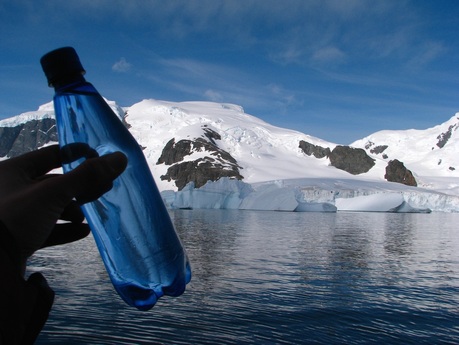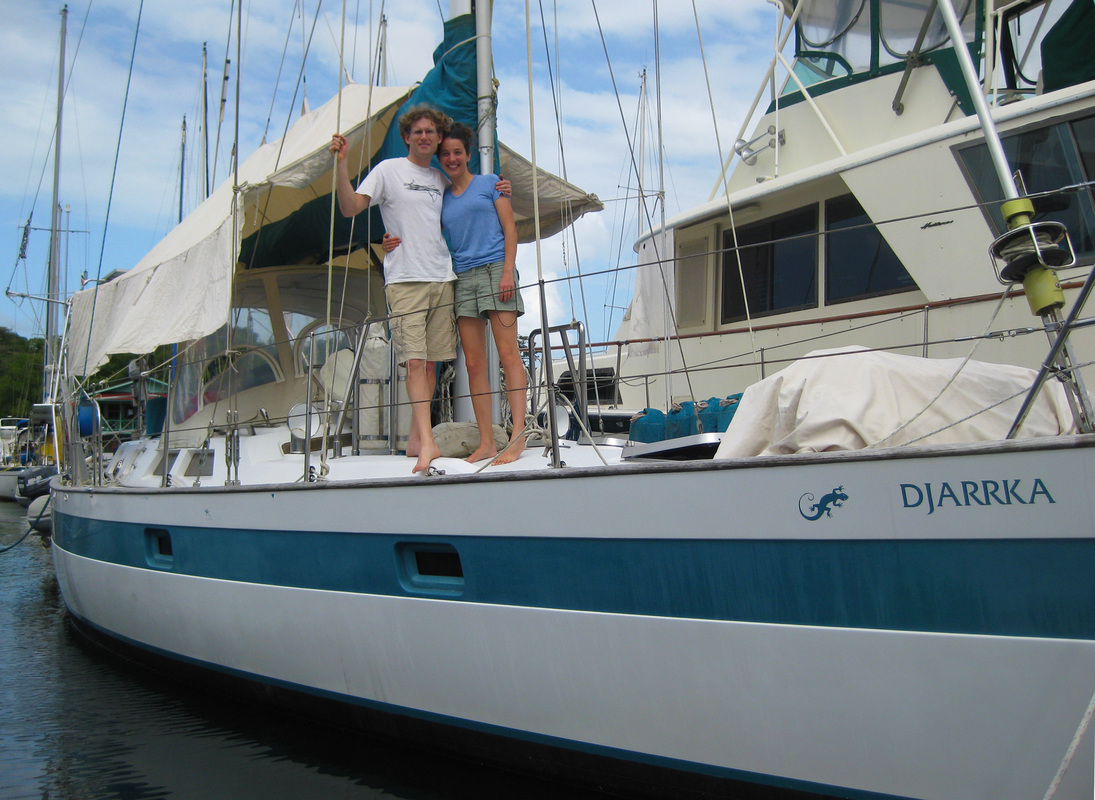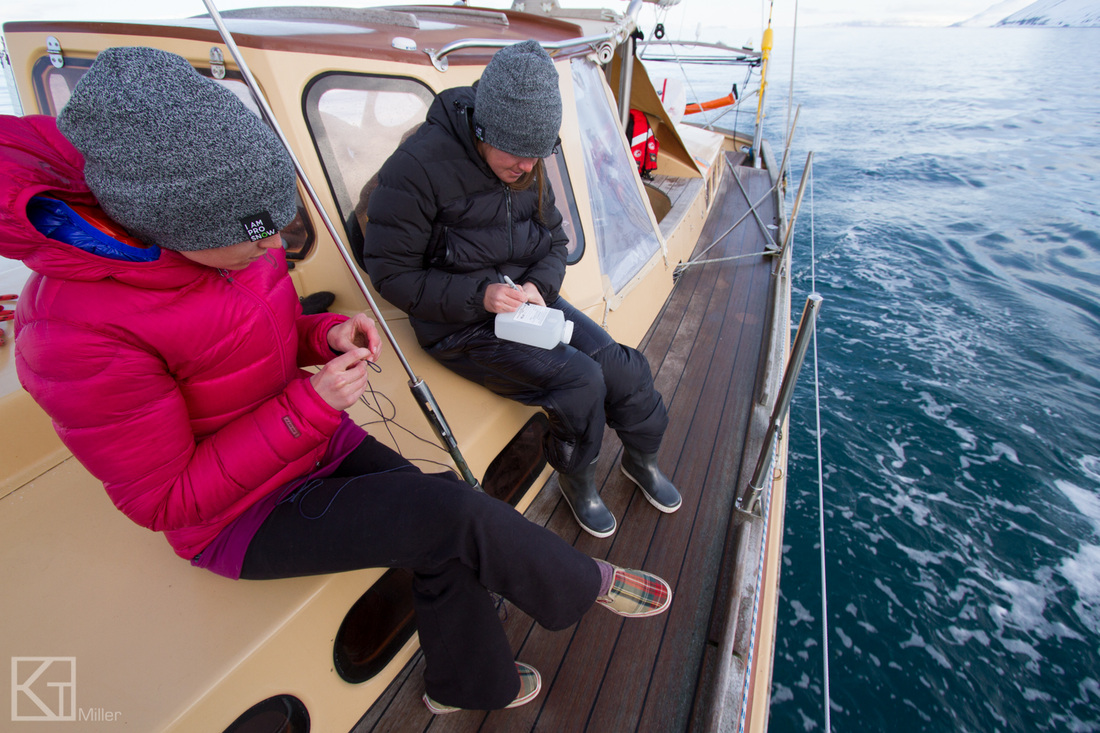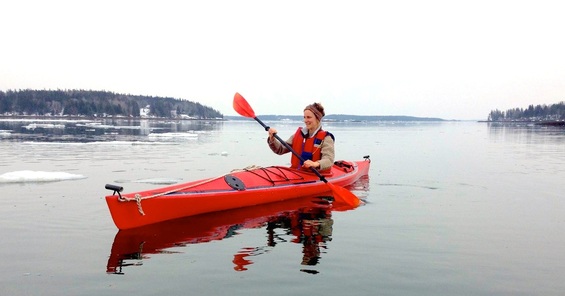ASC Partner Scientist
This summer, ASC adventurers Teresa and Ben Carey sailed to Stonington and to hand-deliver the water samples they collected on their passage from Panama to Maine. I showed them around my lab, and had them process samples two of their samples.
It was great to see the project come full circle, having them filter a liter of water that they had brought from another part of the world and witnessing their reactions when they looked through the microscope and saw plastic particles filtered from what looked like a clean liter of water to the naked eye. One of their samples, taken off of the coast of North Carolina, had 168 pieces. To date, this the second highest amount of plastics I’ve found in a sample during this study!
In fact, one of Merel’s samples contained the third highest concentration of plastics found in a sample, at 134 pieces.
While their sample results are alarming, ASC adventurer scientists like Merel, Teresa and Ben are helping us understand the distribution and concentration of microplastics in the world’s ocean.
This map shows each of the ASC sampling sites, and below I’ve compiled a summary of results from 2013-2014.
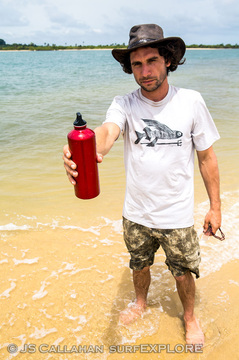 Erwan Simon in the Turtle Islands (Photo by J. Callahan)
Erwan Simon in the Turtle Islands (Photo by J. Callahan)
Bart Heijlen collected two liters of water while sailing in the South Pacific off the coast of New Zealand. In total, the samples contained 13 pieces of plastic, with an average of six pieces per liter. All plastic was categorized as filamentous, and blue was the most common color.
Kachemak Bay, Alaska
John Whittier collected two liters of water from a boat in the waters near Homer, Alaska. One liter did not contain any plastic, and the other contained seven pieces. All plastic was categorized as filamentous, and blue was the most common color.
Antarctic Peninsula and Southern Ocean Islands
Merel Dalebout collected 14 liters of water from beaches in the Falkland Islands, South Georgia Island, the Antarctic Peninsula, and the South Shetland Islands. The samples contained a total of 282 pieces of plastic, with an average of 21 pieces per liter. One sample from the Antarctic Peninsula contained the third highest concentration of plastics found in a sample during this study, at 134 pieces; from this sample, 66 pieces were filamentous and 67 were angular. Overall, plastic was categorized as filamentous or angular, and blue and black were the most common colors.
Turtle Islands, Sierra Leone
Erwan Simon, co-founder of SurfEXPLORE, collected two liters of water from his surfboard in the Atlantic Ocean off the coast of Sierra Leone. In total, they contained 17 pieces of plastic, with an average of seven pieces per liter. All plastic was categorized as filamentous, and transparent/white was the most common color.
McKenna Peterson and Meghan Kelly, of the Shifting Ice and Changing Tides sailing/skiing expedition, collected three liters of water from Iceland, the Denmark Strait and Greenland. In total, they contained 62 pieces of plastic. All plastic was categorized as filamentous or ‘other shape’, and green and ‘other color’ were the most common colors.
Southeast Alaska
Zachary Brown collected two liters of water by sea kayak in the Pacific Ocean off the coast of SE Alaska. In total, they contained 13 pieces of plastic, with an average of five pieces per liter. All plastic was categorized as filamentous, and black was the most common color.
|
Florida
Yanique Richards collected three liters of water from the Gulf of Mexico while walking on the beach. In total, they contained 33 pieces of plastic, with an average of 11 pieces per liter. All plastic was categorized as filamentous, and ‘other color’ and blue were the most common colors. Gulf of Maine Chuck Domenie collected four liters of water while sea kayaking along the coast of Maine. In total, they contained 37 pieces of plastic, with an average of seven pieces per liter. All plastic was categorized as filamentous, and blue was the most common color. Chuck focused sampling at areas of residential overboard discharge and wastewater treatment outfall sites. He also paddled right to the lab and hand-delivered the samples on a cold, windy October day! Rehoboth Beach, Delaware Plastic Tides, Bermuda |
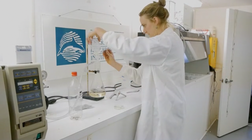 Barrows in her lab Barrows in her lab
Sample Analysis
After receiving a one-liter bottle of ocean water, ASC partner scientist Abby Barrows vacuum pumps the samples over a gridded .45-micron filter. After the sample has dried for 24 hours, she uses a microscope at 40x magnification to look for pieces of plastic smaller than 5 mm in size. Moving systematically along the grid lines, Abby categorizes each piece of plastic based on shape and color. Some of the averages in these summaries may seem low; this is because many samples are not exactly one liter, so Barrows divides the total number of plastics by the water quantity. |
Melinda Janecek collected six liters water from beaches along the California coast. In total, the samples contained 75 pieces of plastic. One liter did not contain any plastic, but because it contained some sand, it may have cause me to overlook plastic contamination. Another one of Melinda’s samples contained the seventh highest plastic quantity of plastics of all of the samples to date, at 52 particles in one sample. The samples contained an average of 11 pieces per liter. All plastic was categorized as filamentous, and transparent/white was the most common color.
Zofia Drapella and Jacob Lloyd collected 10 liters of water while sailing their boat the Nereid across the Atlantic. In total, the samples contained 107 pieces of plastic, with an average of 10 pieces per liter. One sample, taken off the northern coast of Brazil near French Guiana, did not contain any plastic. Interestingly another one of their samples, taken off of the Namibian coast contains the fifth highest plastic quantity of all of the samples to date. Plastic was categorized as filamentous with the exception of two ‘other shape’ pieces. Transparent/white was the most common color.
Guanacaste, Costa Rica
Kira Watkins collected two liters of water from a beach on Costa Rica’s Pacific Coast. In total, they contained 54 pieces of plastic, with an average of 22 pieces per liter. All plastic was categorized as filamentous. Blue was the most common color with transparent/white and black close seconds. Both samples were taken on turtle nesting beaches.

